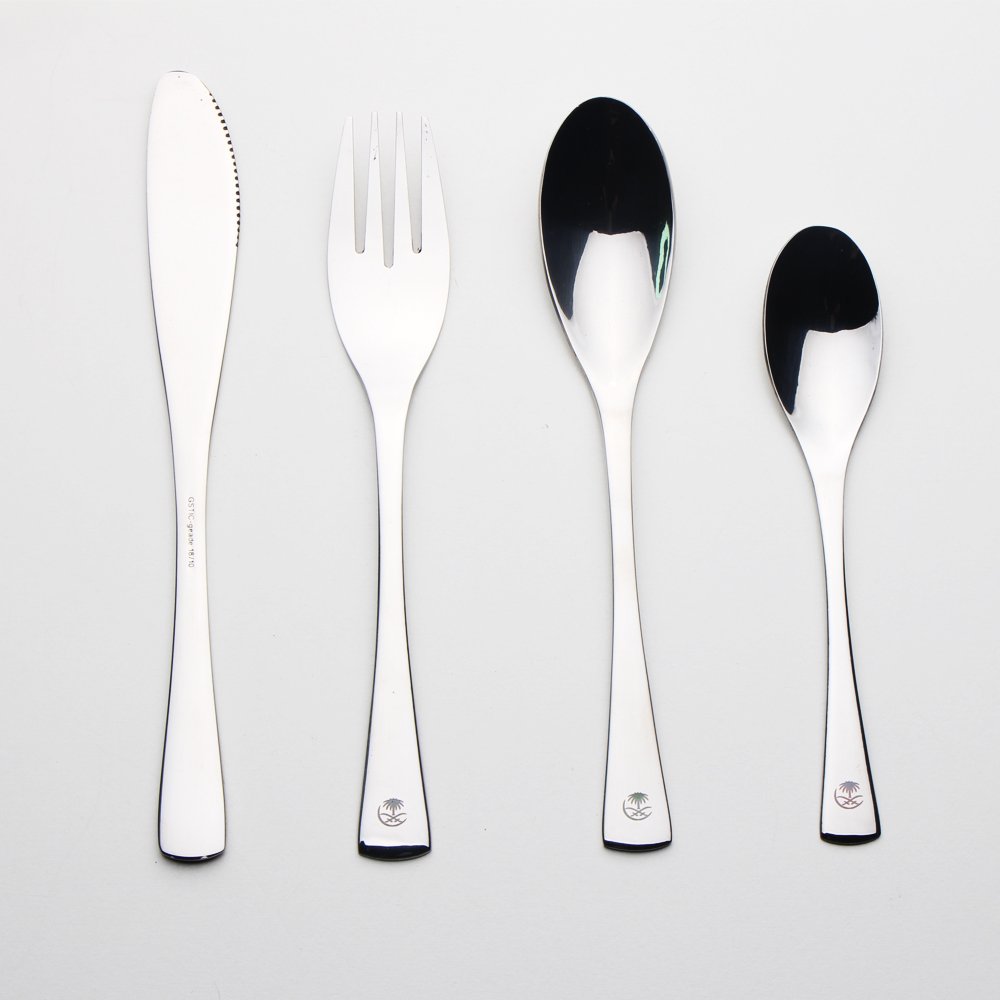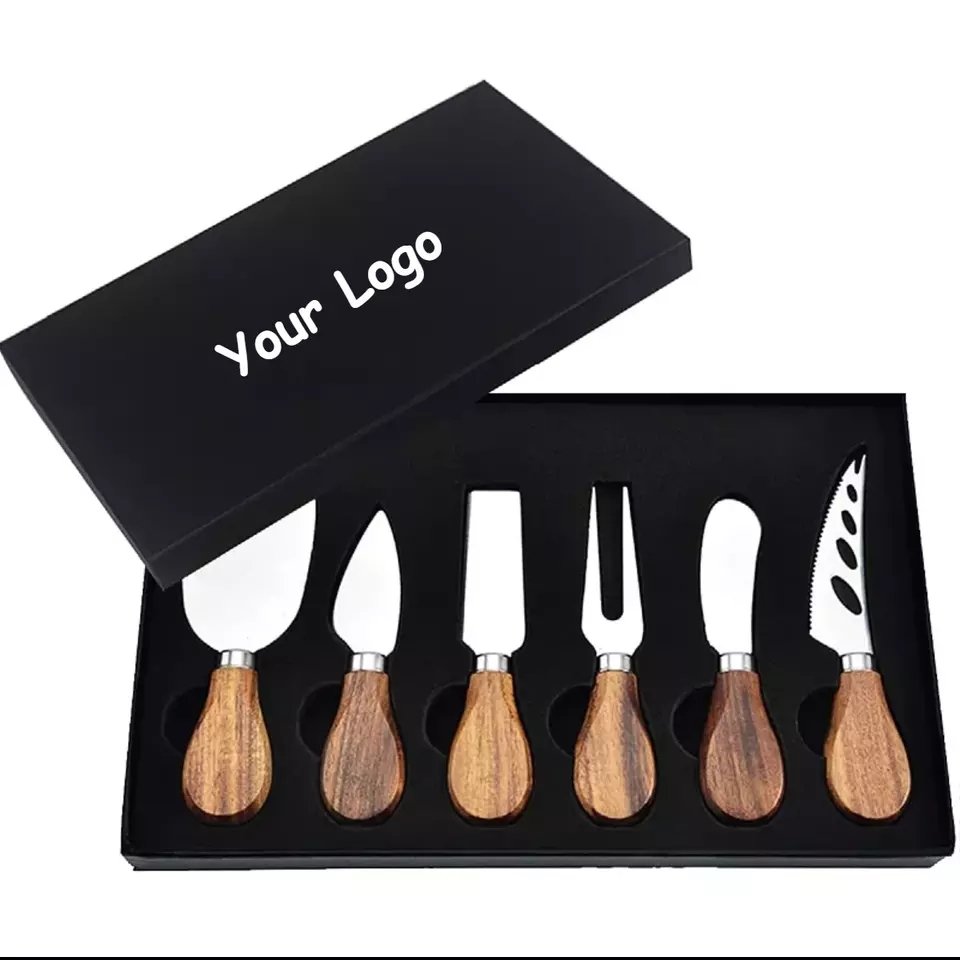Looking for reliable airline cutlery that combines functionality with style? Let me guide you through the world of premium stainless steel airline cutlery.
I’ve spent years designing and supplying high-quality stainless steel airline cutlery that meets both aesthetic and practical needs. Here’s what I know about how to find the best airline cutlery, why stainless steel is preferred, and how to customize it for your airline’s needs.
Let’s dive in and explore why investing in the right airline cutlery matters, how to choose it, and how to avoid common pitfalls.
Table of Contents

Why choose stainless steel airline cutlery?
Stainless steel airline cutlery stands out for its durability and timeless appeal. Unlike disposable options, it offers a luxurious experience for passengers and aligns with sustainable practices.
Airlines choose stainless steel cutlery for its durability, resistance to corrosion, and ability to retain a polished finish over time. It also delivers a premium in-flight dining experience that passengers expect.
Durability, sustainability, and passenger experience
The practicality of stainless steel
Stainless steel’s properties make it ideal for repeated use on flights. It withstands dishwashing cycles and high temperatures, ensuring no warping or loss of shine. This durability directly reduces replacement costs for airlines.
The sustainability advantage
Airlines today face mounting pressure to reduce single-use plastics. Stainless steel cutlery supports these sustainability goals by being reusable and recyclable at the end of its lifecycle.
Passenger perception
I’ve seen firsthand how passengers notice the difference. A polished set of stainless steel cutlery signals attention to detail and elevates the in-flight dining experience. It reinforces the airline’s brand as premium and customer-focused.
Comparing costs and value
Here’s a structured comparison of different materials for airline cutlery:
| Material | Durability | Sustainability | Passenger Experience | Overall Cost Efficiency |
|---|---|---|---|---|
| Stainless Steel | Excellent | Excellent | Luxurious feel | High initial, low long-term |
| Plastic | Poor | Poor | Low, disposable feel | Low initial, high long-term |
| Aluminum | Moderate | Moderate | Neutral | Medium initial, moderate long-term |
By analyzing these factors, it’s clear that stainless steel delivers long-term value and aligns with modern airline goals.
How to find reliable airline cutlery suppliers?
Finding the right supplier is crucial. It affects not only the product’s quality but also its on-time delivery, customization flexibility, and cost.
To find a reliable airline cutlery supplier, look for companies with experience in aviation catering, certifications for food safety, and proven production capabilities for stainless steel cutlery.
Criteria for choosing the right supplier
Experience in airline cutlery production
I always advise airline clients to prioritize suppliers who specialize in aviation. Airlines operate under strict hygiene and safety rules. Suppliers with experience in this field understand these challenges and can meet them.
Certifications and compliance
The best suppliers hold certifications such as ISO 22000 for food safety and ISO 9001 for quality management. These certifications ensure consistent quality and compliance with international standards.
Customization capabilities
Airlines need custom branding and unique designs to stand out. Reliable suppliers can create molds for custom logos or engraved patterns. They offer flexibility in fork, knife, and spoon shapes to match different cabin classes.
Communication and service
In my work, I’ve seen how clear communication can make or break a project. The best suppliers provide samples, detailed drawings, and transparent timelines. They keep you updated throughout the process.
A structured checklist to vet suppliers:
| Criteria | Why it Matters | What to Look For |
|---|---|---|
| Experience | Aviation cutlery has unique challenges | Portfolio with airline projects |
| Certifications | Compliance with health and safety standards | ISO 22000, ISO 9001 |
| Customization options | Branding and passenger experience | Custom logo engraving, mold creation |
| Communication | Smooth collaboration | Responsive, clear project updates |
| Production capabilities | Meeting volume and quality needs | In-house production, not just trading |
By following this structured approach, airlines can find suppliers who deliver on both quality and partnership.
What makes airline cutlery different from regular cutlery?
Airline cutlery must meet strict safety, weight, and durability standards while still reflecting the airline’s brand image.
Airline cutlery is different from regular cutlery because it must be lightweight, stackable, safe, and designed for repeated use in an aviation setting.
The functional and aesthetic differences
Weight and balance
On a plane, every gram counts. Airline cutlery is typically lighter than household cutlery. I work with designers to find the sweet spot between reducing weight and maintaining a premium feel.
Safety and ergonomics
Airline cutlery has rounded edges and ergonomic handles to ensure passenger safety. It also has to be easy to handle in a confined airplane seat.
Stackability and space-saving design
Storage space on an aircraft is limited. That’s why airline cutlery often has stackable or nesting designs, making it easier to store and transport.
Branding and passenger experience
Regular cutlery doesn’t need to represent a brand. Airline cutlery, on the other hand, is an extension of the airline’s brand identity. It often includes logos and unique finishes to reinforce that identity.
Structured comparison:
| Feature | Airline Cutlery | Regular Cutlery |
|---|---|---|
| Weight | Lightweight, weight-optimized | Heavier, not weight-constrained |
| Design | Ergonomic, rounded edges, stackable | More varied, not designed for stacking |
| Branding | Logos, airline-specific design | Typically unbranded |
| Safety and regulations | Must meet aviation safety standards | No aviation-specific safety standards |
These differences underscore why airline cutlery is a specialized product that requires dedicated expertise in design and production.
What are the customization options for airline cutlery?
Customization is key to differentiating the passenger experience and reinforcing the airline’s brand. Let me show you the possibilities.
Airline cutlery can be customized in shape, finish, logo placement, and even color, depending on the cabin class and brand identity.
Exploring the full range of customization
Material selection and finish
The choice of stainless steel grade influences not only durability but also the feel and appearance. Common options include 18/0, 18/8, and 18/10 stainless steel. Each has its own balance of corrosion resistance and polish retention.
Logo placement and engraving
Logos can be laser-etched, embossed, or engraved on the handle or blade. I’ve worked with airlines to incorporate logos that subtly reinforce their brand identity.
Handle design and balance
The shape and thickness of the handle can be tailored for economy, business, or first class. Thinner handles for economy class save weight and space, while first-class cutlery often features thicker, more luxurious handles.
Color finishes and coatings
While traditional cutlery is silver-toned, special coatings can add a touch of luxury. PVD coatings in gold, black, or bronze can create a distinctive look for premium cabins.
Structured table of customization options:
| Customization Type | Options and Impact |
|---|---|
| Material and Finish | 18/0, 18/8, 18/10 stainless steel grades; mirror or satin finish |
| Logo Placement | Laser etching, embossing, engraving |
| Handle Shape and Balance | Thin for economy, thick for first class |
| Color Coatings | PVD gold, black, bronze for premium differentiation |
By leveraging these customization options, airlines can create a dining experience that resonates with passengers and reinforces brand loyalty.

What is the highest quality stainless steel cutlery?
Quality comes down to the right mix of material, craftsmanship, and thoughtful design. Let’s look at what makes the highest-quality cutlery.
The highest quality stainless steel cutlery typically uses 18/10 stainless steel. This material balances corrosion resistance with a polished finish that endures flight after flight.
What sets 18/10 stainless steel apart?
Understanding the alloy
18/10 stainless steel contains 18% chromium and 10% nickel. Chromium adds corrosion resistance. Nickel enhances shine and durability. This makes it ideal for premium airline cutlery that needs to maintain its look through countless uses.
Performance in aviation environments
Airline cutlery sees repeated washing and handling. 18/10 steel resists pitting and dulling, maintaining its elegant appearance far longer than lower-grade options.
Comparing stainless steel grades
Here’s a breakdown of how the three most common stainless steel grades compare:
| Grade | Composition | Corrosion Resistance | Shine Retention | Typical Use |
|---|---|---|---|---|
| 18/0 | 18% chromium, 0% nickel | Moderate | Lower | Economy cutlery |
| 18/8 | 18% chromium, 8% nickel | Good | Good | Mid-range cutlery |
| 18/10 | 18% chromium, 10% nickel | Excellent | Excellent | Premium airline cutlery |
In my experience, airlines that choose 18/10 stainless steel see longer-lasting cutlery that retains its polish and brand image far better than lower-grade options.

Can you take silverware from a plane?
This question comes up more often than you’d think. Let me clear up the confusion.
No, passengers cannot take airline cutlery from a plane. Airline cutlery is considered airline property, and removing it is technically theft.
The legal and practical reasons
Airline property rules
Airlines purchase cutlery for in-flight service, not as gifts for passengers. Taking it is similar to taking a pillow or blanket—it’s airline property.
Security and cost
Airlines must account for all items on a flight. Missing cutlery can trigger inventory discrepancies and even security concerns if sharp items are missing.
Real-world consequences
Most airlines won’t pursue passengers who accidentally slip a fork into their bag. But in theory, removing cutlery can lead to fines or being flagged by security. It’s best to leave it on the tray and avoid any unnecessary headaches.
| Item | Can you take it? | Why? |
|---|---|---|
| Stainless steel cutlery | No | Airline property, security concerns |
| Disposable plastic cutlery | Sometimes | Often allowed, as it’s single-use |
| Blankets | No | Typically airline property |
These policies protect airlines’ assets and ensure passenger safety.
Can you keep airline cutlery?
I get asked this a lot by curious travelers. The answer might surprise you.
No, you’re not allowed to keep airline cutlery. It belongs to the airline and is meant for reuse on future flights.
Why airlines don’t want you to keep their cutlery
Reuse and sustainability
Airlines reuse stainless steel cutlery to save on cost and reduce waste. Each piece is accounted for at the end of a flight.
Cost and accountability
Stainless steel cutlery is expensive to replace. Airlines track these items closely because losing them adds up quickly.
Cultural norms
Some cultures see taking items as “souvenirs,” but in aviation, it’s theft. It’s best to respect these boundaries.
| Item | Airlines’ Policy |
|---|---|
| Stainless steel cutlery | Reusable, not for passenger takeaway |
| Plastic cutlery | Disposable, might be taken in some cases |
| Amenity kits | Often given to passengers, okay to take home |
In my years working with airline clients, I’ve seen how important it is to clarify these rules so passengers understand and airlines protect their assets.
Stainless steel airline cutlery is an essential part of the in-flight dining experience. It reflects brand values, ensures durability, and enhances the passenger journey—all while supporting sustainability goals.





